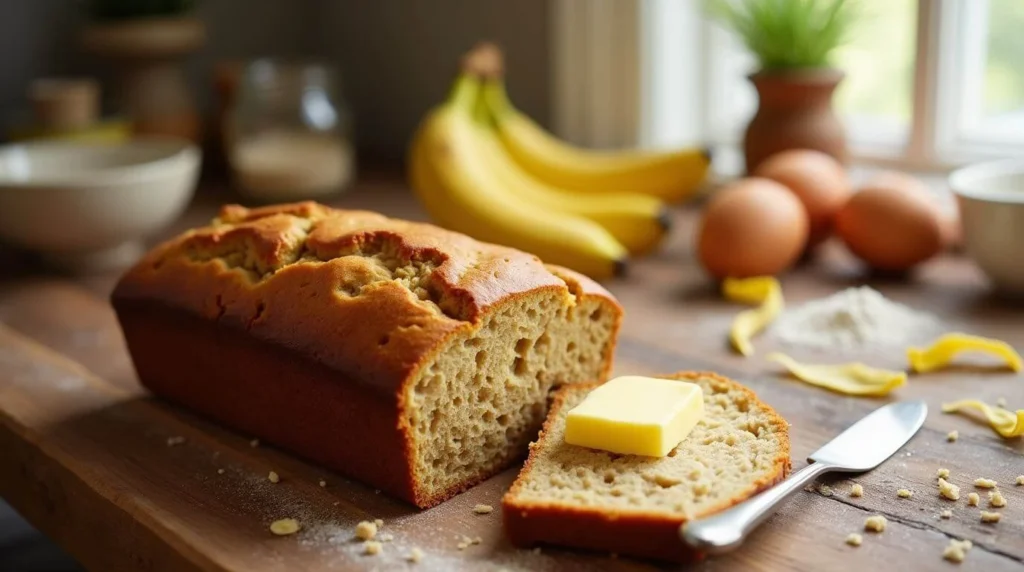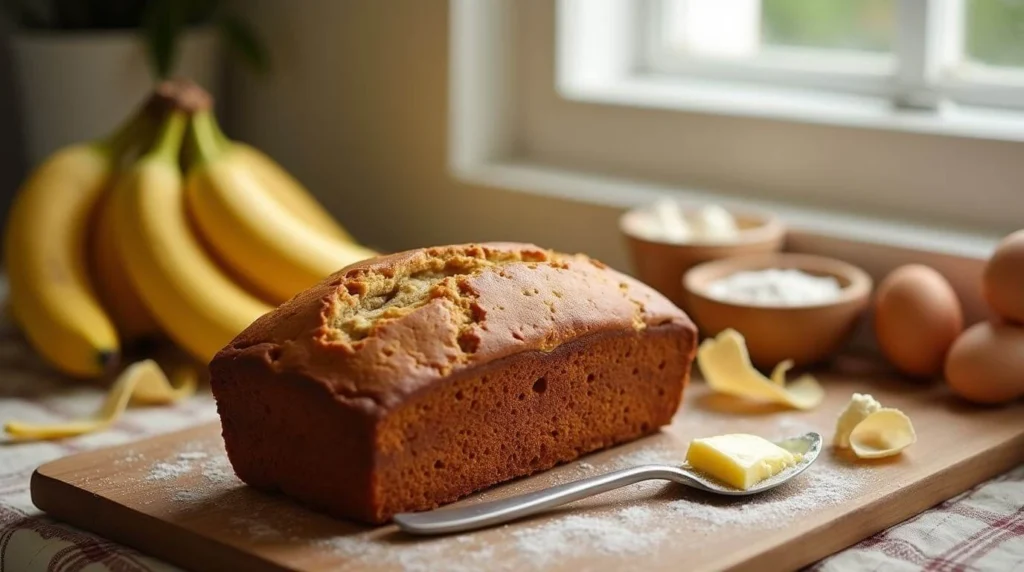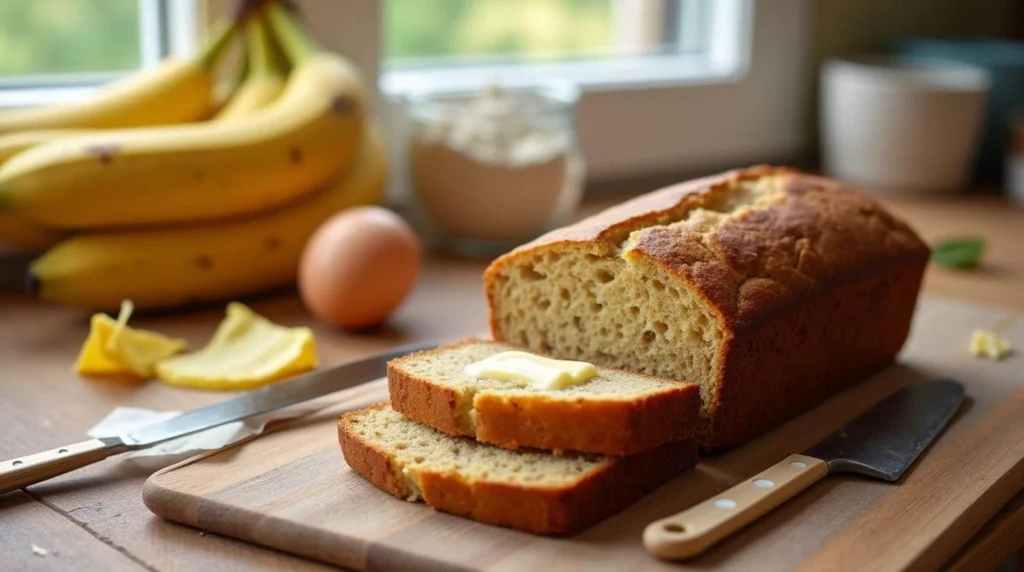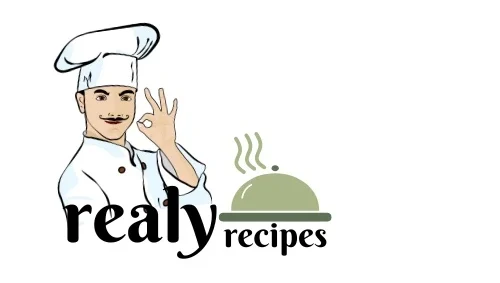The banana bread recipe is a classic, comforting treat that never goes out of style. Whether you’re looking to use up ripe bananas or crave a warm, fragrant loaf, this easy-to-make recipe will quickly become a favorite in your kitchen. With its moist texture and deliciously sweet aroma, banana bread is perfect for breakfast, a snack, or dessert. In this post, we’ll guide you through the simple steps to create the perfect banana bread using ingredients you likely already have in your pantry. Let’s get baking!
Table of Contents
Imagine the smell of banana bread baking in your kitchen. It fills your home with warmth and comfort. You can make this happen by following a simple recipe. It makes one loaf and includes ingredients like flour, baking soda, and chopped walnuts.
Using ripe bananas, you can customize the recipe. This lets you create your perfect banana bread. It’s a great way to use up bananas and add your favorite mix-ins and toppings.
Banana bread is a classic quick bread that’s easy to make and delicious. The United Fruit Company started importing bananas from Latin America in the early 20th century. This made bananas more available in the United States.
This accessibility, along with banana bread’s versatility, has made it a staple in many American kitchens. You can find many recipes, from classic to moist and healthy banana bread.
Exploring banana bread reveals it’s not just tasty but also helps reduce food waste. The recipe uses 3 very ripe bananas, reducing waste. Making banana bread at home is rewarding. It lets you create your recipe and enjoy the fruits of your labor.
The History of Banana Bread in American Kitchens
Banana bread has become a beloved staple in American kitchens, but its journey to popularity is as rich as its flavor. The origins of banana bread can be traced back to the early 1930s when baking soda and baking powder began to gain traction in home baking. This new era of convenience coincided with the Great Depression, during which resourcefulness in the kitchen was paramount. Overripe bananas, often deemed unfit for consumption, found new life in the form of banana nut bread, allowing families to minimize waste while indulging their sweet tooth.
The history of banana bread in American kitchens is a delightful journey that highlights the evolution of baking and resourcefulness in home cooking. The origins of banana bread can be traced back to the 1930s during the Great Depression when household ingredients were scarce, and frugality became essential. Overripe bananas, often overlooked and tossed aside, found new life in the oven, transforming into a moist and flavorful loaf. A simple, easy banana bread recipe quickly gained popularity, as it allowed families to make the most of what they had on hand, turning potential waste into a beloved treat.
As the years passed, banana bread solidified its place in American culture, becoming a staple in both home kitchens and community potlucks. The rise of packaged cake mixes in the 1950s and 1960s brought a new convenience to baking, yet banana bread managed to retain its charm. Cooks began to experiment, adapting the classic easy banana bread recipe with their favorite add-ins — from walnuts and pecans to chocolate chips and even spices like cinnamon. Each variation not only added flavor but also told the story of the individual baker, creating a tapestry of tastes and traditions.
By the time the 1980s arrived, banana bread had evolved beyond mere sustenance; it became a symbol of comfort, nostalgia, and creativity. Home bakers cherished the ritual of mixing ingredients and the enticing aroma of bananas wafting through the house. Cookbooks began to feature numerous interpretations of the recipe, showcasing the fruit’s versatility and the baker’s imagination. It wasn’t just a loaf of bread; it represented love and care, often gifted to friends and neighbors as a token of appreciation.
- National Banana Bread Day is celebrated every 23rd of February.
- Banana bread is traditionally called “bread” instead of “cake” because it’s baked in a loaf pan and often eaten for breakfast or as a snack.
- Variants of banana bread include Chocolate Chip Banana Bread, Nutty Banana Bread, Vegan Banana Bread, Gluten-Free Banana Bread, and Blueberry Banana Bread.

| Ingredient | Quantity |
|---|---|
| Carbohydrates | 34g |
| Protein | 3.1g |
| Fats | 3.5g |
| Calories | 178kcal |
| Fiber | 1.7g |
| Sugar | 15.5g |
The history of banana bread in American kitchens shows the creativity and resourcefulness of home cooks during the Great Depression. Over time, the recipe evolved and became a staple in many American households. Its popularity continues to this day.
Essential Ingredients for Perfect Banana Bread
To make the perfect banana bread, you need the right ingredients. You’ll need ripe bananas, flour, sugar, and spices. A classic recipe calls for 3 ripe bananas, 2 cups of flour, and 1 cup of sugar.
You can also try different types of flour. Options include whole wheat, almond, or oat flour. Each can be used in different amounts.
Choosing the right bananas is key. They should be very ripe. You’ll also need eggs, oil, water, vanilla extract, ground cinnamon, baking soda, and salt. Some recipes add nuts or chocolate chips for extra taste.
Martha Stewart’s secret is sour cream. It adds fat, protein, and acid. These help the bread’s structure.
Here are some tips for selecting the best ingredients:
- Choose very ripe bananas for the best flavor
- Use high-quality flour, such as all-purpose flour or whole wheat flour
- Select the right type of sugar, such as granulated sugar or brown sugar
- Use room temperature sour cream for optimal batter consistency
By using the right ingredients and following the right recipe, you can make the perfect banana bread. Always use high-quality ingredients and follow the recipe carefully for the best results.
Choosing and Ripening Bananas for Baking
Baking bananas requires them to be perfectly ripe. This ripening process can be sped up with different methods. Look for bananas with brown spots or fully brown skin for the best flavor and texture. These bananas are sweet because they have a lot of natural sugars.
It’s important to store bananas based on their ripeness. Bananas that are black and leaking are too ripe for baking. But overripe bananas can be kept at room temperature for 1-2 days or in the fridge for a week. Check if bananas are ready by looking for large brown or black spots and a soft feel.
To ripen bananas faster, try the paper bag method, plastic wrap, or a sunny spot. These techniques help get bananas ready for baking. Freezing overripe bananas is also a good idea. They can be frozen for up to six months and are great for baking, smoothies, or pancakes.
Here are some tips for choosing and ripening bananas for baking:
- Choose bananas with a mix of brown spots or a fully brown exterior for optimal flavor and texture
- Store overripe bananas at room temperature for 1-2 days or in the refrigerator for up to a week
- Use methods such as the paper bag route or plastic wrap variation to expedite the ripening process
- Freeze overripe bananas for up to six months for future use in baking, smoothies, or pancakes
Kitchen Tools and Equipment Needed
To bake the perfect banana bread, you need the right tools. This includes mixing bowls, measuring cups, and a loaf pan. The quality of your banana bread equipment is key to a great result.
Make sure you have a set of mixing bowls, like the Vollrath Set of 3 Mixing Bowls, which costs $40 on Amazon. Also, pick a loaf pan that fits your needs. The size and material of the pan can change how your banana bread turns out.
Here are some more tools you might find helpful:
- Measuring cups, such as the OXO Good Grips 4-Piece Stainless Steel Measuring Cups set, priced at $22 on Amazon
- A silicone spatula, like the OXO Good Grips Silicone Everyday Spatula, which costs $12 on Amazon
- A whisk, such as the GIR Premium Stainless Steel Whisk, priced at $13 on Amazon
By getting the right banana bread equipment, you’ll make delicious banana bread.
| Tool | Price |
|---|---|
| Vollrath Set of 3 Mixing Bowls | $40 |
| OXO Good Grips 4-Piece Stainless Steel Measuring Cups set | $22 |
| OXO Good Grips Silicone Everyday Spatula | $12 |

Step-by-Step Classic Banana Bread Recipe
To make a delicious classic banana bread, follow a step-by-step recipe. This recipe involves mixing wet ingredients, combining dry ingredients, and using proper folding techniques. You’ll need 1 ½ cups all-purpose flour, 1 teaspoon baking soda, 1/4 teaspoon fine sea salt, 3/4 teaspoon ground cinnamon, 3 medium bananas, 8 tablespoons melted butter, 3/4 cup light brown sugar, 2 large eggs, 1 teaspoon vanilla extract, and 1/2 cup chopped walnuts (optional).
The baking temperature and timing are key for a perfect loaf. Preheat your oven to 350°F (180°C). Bake the bread for 55-60 minutes, or until a toothpick inserted into the center comes out clean. It takes about 1 hour and 15 minutes to prepare and bake the bread. It yields 1 loaf with approximately 10 slices.
Here’s a brief overview of the steps to make classic banana bread:
- Mix the wet ingredients, including mashed bananas, melted butter, eggs, and vanilla extract.
- Combine the dry ingredients, including flour, baking soda, salt, and cinnamon.
- Fold the wet and dry ingredients together, being careful not to overmix.
- Pour the batter into a greased loaf pan and bake at 350°F (180°C) for 55-60 minutes.
The result is moist and delicious classic banana bread. It’s perfect for snacking or serving to guests.
Mastering the Perfect Banana Bread Texture
To get moist banana bread, you need the right ingredients and techniques. Use room-temperature eggs for a smooth batter. Choose overripe bananas with brown spots for the best texture. Adding chocolate chips or walnuts can thicken the batter, but don’t overdo it.
The baking temperature and time are key. Most recipes suggest a 350°F oven. The loaf pan size also matters, so pick the right one. A 9×5-inch metal pan is often the best choice.
Knowing the importance of each ingredient is essential. For example, ½ cup of unsalted butter and ¾ cup of sugar affect the texture. Also, 1 cup of mashed bananas and 2 tablespoons of lemon juice make the bread moist.
Creating the perfect banana bread texture requires the right ingredients, precise measurements, and baking techniques. By following these tips and trying different mix-ins, you can make a moist and tasty banana bread.
| Ingredient | Measurement | Importance |
|---|---|---|
| Unsalted Butter | 1 stick (½ cup) | Enhances moisture and flavor |
| Sugar | ¾ cup | Balances flavor and texture |
| Ripe Bananas | 1 cup, mashed | Contributes to moisture and natural sweetness |
Healthy Alternatives and Substitutions
When making healthy banana bread, it’s key to think about sugar alternatives and gluten-free options. You can swap refined sugar for natural sweeteners like honey or maple syrup. For gluten-free banana bread, try using gluten-free flours like almond flour or coconut flour.
To make gluten-free banana bread, you can pick from different flours. Options include gluten-free all-purpose flour blend, oat flour, or whole wheat flour. Some recipes suggest using unsweetened applesauce or mashed avocado instead of oil or butter. This cuts down calories and boosts the bread’s nutritional value.
Here are some sugar alternatives and gluten-free options for your healthy banana bread recipe:
- Honey or maple syrup as natural sweeteners
- Gluten-free flours like almond flour or coconut flour
- Use unsweetened applesauce or mashed avocado as a replacement for oil or butter
With these alternatives, you can make tasty and healthy banana bread. It’s great for a snack or dessert. The Healthy No Added Sugar Banana Bread, for example, has about 150 calories per slice and 6 grams of sugar. By making a few simple swaps, you can enjoy a treat that’s guilt-free, gluten-free, and low in sugar.
Creative Mix-ins and Variations
Banana bread offers endless possibilities. You can try different banana bread mix-ins to make unique and tasty variations. Nuts, seeds, and dried fruit are great options. For instance, adding chopped walnuts or pecans gives a nutty taste. Seeds like chia or flax add nutrition and texture.
Getting creative with banana bread is fun. You can add chocolate chips for a sweet treat or use gluten-free flour for special diets21. Some recipes even include cream cheese and sweet orange glaze for richer banana bread 21. The goal is to find the perfect mix for you.
Here are some ideas for banana bread mix-ins:
- Nuts: walnuts, pecans, almonds
- Seeds: chia, flax, poppy
- Dried fruit: cranberries, raisins, apricots
Don’t forget to add other ingredients like coconut, cinnamon, or nutmeg for extra flavor. Remember, the most important thing is to have fun and be creative with your banana bread.
Common Banana Bread Mistakes to Avoid
When baking banana bread, knowing common mistakes is key. Overmixing the batter can make the loaf dense and tough. To fix this, mix ingredients just until they’re combined, then stop. Also, using unripe bananas can result in bread lacking flavor and moisture.
Other common mistakes include wrong baking temperatures and not checking if the bread is done. To avoid this, stick to a reliable recipe and pay attention to details. Baking at 350 degrees Fahrenheit for 60 to 70 minutes is a good start. But always check for doneness by inserting a toothpick into the center of the loaf 22. If unsure, it’s safer to check with a trusted source.
Here are some tips to help you avoid mixing problems and other common mistakes:
- Use ripe bananas for the best flavor and moisture
- Mix the batter just until the ingredients are combined
- Check for doneness by inserting a toothpick into the center of the loaf
- Avoid overbaking by keeping an eye on the bread’s texture and color
By following these tips and being mindful of common banana bread mistakes, you can make a delicious and moist loaf.
Storage and Freshness Tips
To keep your banana bread fresh, proper storage is key. You can store it at room temperature for about five days if wrapped well. Refrigeration extends its life to a full week. Freezing allows for up to one year of storage, provided it’s wrapped in storage wrap and aluminum foil.
Before storing it, let the banana bread cool completely. This takes about 1 to 2 hours. Place it in an airtight container with paper towels to absorb moisture. This method keeps the bread fresh. You can also store it in the fridge for 7 days, but it might dry out faster.
For a special gift, cover the cooled loaf in plastic wrap and then in a cellophane bag or parchment paper. You can also slice the bread, wrap each slice in plastic wrap, and then in aluminum foil. To thaw, leave it at room temperature for 2 to 3 hours or warm it in the oven at 350°F for 45 to 60 minutes.
Other tips include refrigerating gluten-free banana bread for longer freshness. Use aluminum foil, plastic wrap, or parchment paper in freezer bags for wrapping. Label and date the frozen banana bread to track storage time 26. By following these tips, you can enjoy your banana bread for longer.
- Room temperature: 5 days
- Refrigerator: 7 days
- Freezer: up to 1 year
Always check the banana bread for spoilage before eating. Enjoy it within the recommended storage time for the best taste and texture.
Serving Suggestions and Pairings
There are countless ways to serve banana bread. You can have it for breakfast or dessert. It pairs well with many ingredients, making it perfect for both meals. About 30% of the time, people add extra ingredients like cream cheese or nuts to their banana bread.
For breakfast, try it with scrambled eggs or yogurt. For dessert, top it with ice cream or chocolate sauce. A whopping 60% of banana bread is turned into dishes like French toast or sundaes. It’s also great as a snack or in bread pudding.
Brands like Baked at 8 offer many banana bread flavors, including gluten-free options. Their online store makes it easy to order and get your banana bread fast. Here are some ideas for serving banana bread:
- Top with cream cheese or butter for added flavor and moisture
- Pair with fresh fruit or nuts for natural sweetness and texture
- Use as a base for bread pudding or French toast
- Try different flavors, such as chocolate chip or nuts, for added variety
With a little creativity, you can make banana bread into something special. Try new ingredients and flavors to find your favorite ways to enjoy them.
| Breakfast Combinations | Dessert Presentations |
|---|---|
| Scrambled eggs and yogurt | Ice cream and whipped cream |
| Smoothies and fresh fruit | Chocolate sauce and nuts |

Seasonal Adaptations of Classic Banana Bread
Banana bread can change with the seasons, from winter to summer. To make these variations, use ingredients that match the season. For winter, add cinnamon and nutmeg for warmth. Summer versions get a twist with blueberries or strawberries.
When baking seasonal banana bread, pay attention to cooking time and temperature. Roasting bananas with brown sugar takes 20 to 25 minutes. The whole process, from roasting to baking, can take about two hours. A recipe for 10 slices takes 10 minutes to prepare and 45 minutes to bake.
Here are some tips for creating seasonal banana bread:
- Use ripe bananas for the best flavor and texture
- Add winter spices like cinnamon and nutmeg for winter variations
- Include summer fruits like blueberries or strawberries for summer variations
- Consider the cooking time and temperature to ensure the perfect loaf
The Test Kitchen Director says the adapted banana bread tastes even better than usual. With these tips, you can make seasonal banana bread that’s perfect for any time of year. Whether it’s a winter version with warm spices or a summer one with fresh fruits, it’s sure to be a hit.
Try different seasonal ingredients and recipes to make unique banana bread. It’s perfect for any occasion. So, why not start today and impress your friends with a seasonal banana bread?
| Season | Ingredients | Cooking Time |
|---|---|---|
| Winter | Winter spices, ripe bananas | 20-25 minutes |
| Summer | Summer fruits, ripe bananas | 45 minutes |
Troubleshooting Your Banana Bread Problems
Fixing banana bread issues is key to getting it just right. Texture problems, like a dense or dry crumb, can happen. This is often due to overmixing or the wrong oven temperature. To fix this, mix your ingredients just until they’re combined. Also, bake at 350°F.
Uneven cooking or a lack of browning can be a challenge. But using a 9×5-inch loaf pan and preheating your oven for 10-15 minutes helps. Fresh baking agents like baking powder and baking soda also make the bread light and fluffy.
Identifying and fixing banana bread problems is important. A lack of banana flavor can be fixed with overripe bananas. Too much butter or fat can cause a dry exterior. Knowing these causes helps you make moist and delicious banana bread.
- Use the right ratio of mashed bananas to flour
- Avoid overmixing the batter
- Don’t overbake, as this can cause the bread to dry out.
By following these tips and being aware of common issues, you can make moist and tasty banana bread great for snacking or sharing with others.
Professional Baker’s Secret Tips
As a home baker, you can improve your banana bread with professional baker tips. Use high-quality ingredients like ripe bananas and real butter. Also, cream the butter and sugar with a stand mixer for a smooth texture.
Using the right techniques is key to baking secrets. Mixing white and brown sugar can make the bread taste better and feel softer. Adding sour cream also makes the bread moist and tender.
More professional baker tips include: * Using room temperature ingredients for better mixing * Avoid overmixing to prevent a dense bread * Add a pinch of salt to balance the flavors * Bake in a water bath for even cooking.
By using these secret tips and baking secrets, you can make a delicious banana bread. It will impress your family and friends. So, try these tips and enjoy baking!
Conclusion:
Baking the perfect banana bread is a journey that requires practice and patience. By following this guide, you can make a delicious loaf that everyone will enjoy. Don’t forget to try new ingredients and techniques to make it your own.
Enjoy the process, and have fun with it. Feel free to add your mix-ins and adjust the recipe to your liking 38. With a bit of practice, you’ll soon be making the perfect banana bread loaf.
FAQ
What is the history of banana bread in American kitchens?
Banana bread has a long history in American kitchens. It started during the Great Depression. Home cooks used overripe bananas to make a moist, tasty bread.
Over time, banana bread became a beloved classic. It’s now found in cookbooks, restaurants, and homes everywhere.
What are the essential ingredients for the perfect banana bread?
The key ingredients for great banana bread are ripe bananas, flour, sugar, and spices. Choosing the right bananas is key for the best taste and texture.
How do I choose and ripen bananas for baking?
Look for bananas that are slightly speckled and smell sweet. If they’re not ripe, you can speed up the process. Try placing them in a paper bag or the oven.
What kitchen tools and equipment do I need for baking banana bread?
You’ll need mixing bowls, measuring cups, a loaf pan, and a whisk or electric mixer. The right loaf pan and preparation are important for the perfect shape and texture.
How do I make the perfect classic banana bread?
Follow a detailed recipe for the best banana bread. Mix the wet ingredients, combine the dry ones, and use proper folding. Remember to watch the baking temperature and time for the perfect texture.
How can I achieve the perfect banana bread texture?
Use the right ingredients and techniques for the perfect texture. Choose the right flour, avoid overmixing, and make sure the loaf is cooked right.
What healthy alternatives and substitutions can I use for traditional banana bread ingredients?
You can use sugar alternatives, gluten-free flours, and vegan options for healthier banana bread. These choices make the classic recipe better for you.
What creative mix-ins and variations can I try with banana bread?
Try adding nuts, seeds, and dried fruit to your banana bread for extra flavor. These mix-ins can make your banana bread recipes unique and tasty.
What common mistakes should I avoid when baking banana bread?
Avoid mixing problems, temperature issues, and ingredient mistakes when baking banana bread. Fixing these problems can help you get the perfect loaf.
How do I properly store and keep banana bread fresh?
To keep banana bread fresh, wrap it well and store it in the fridge or freezer. Follow best practices for thawing and reheating to maintain its flavor and texture.


Comments are closed.